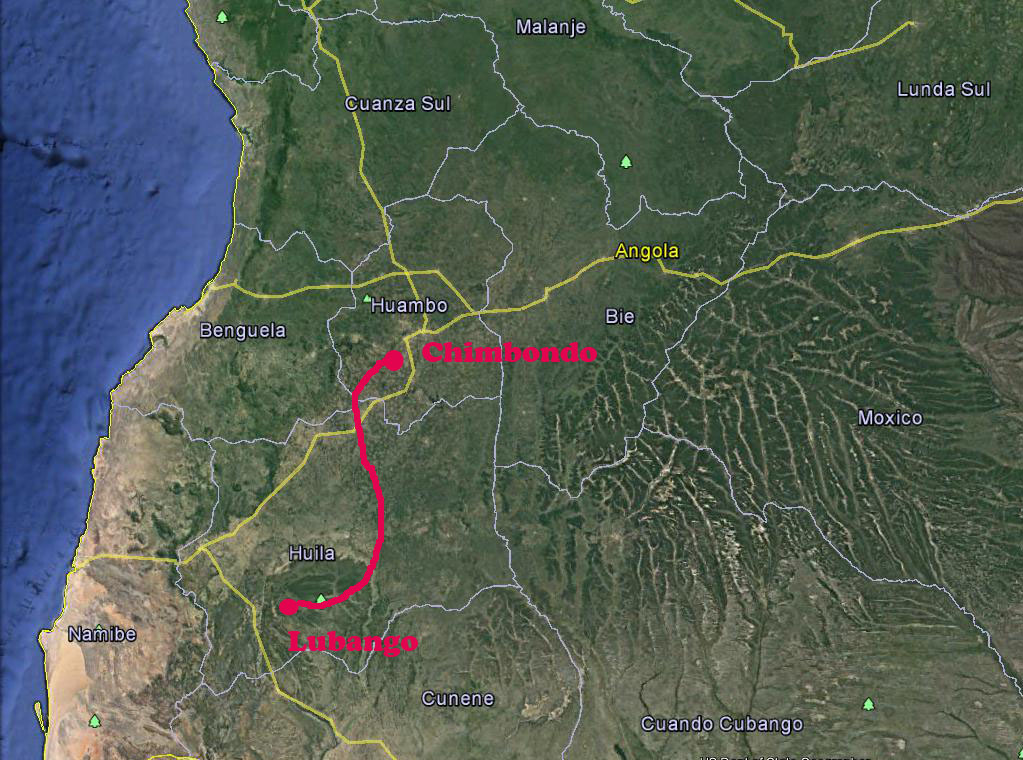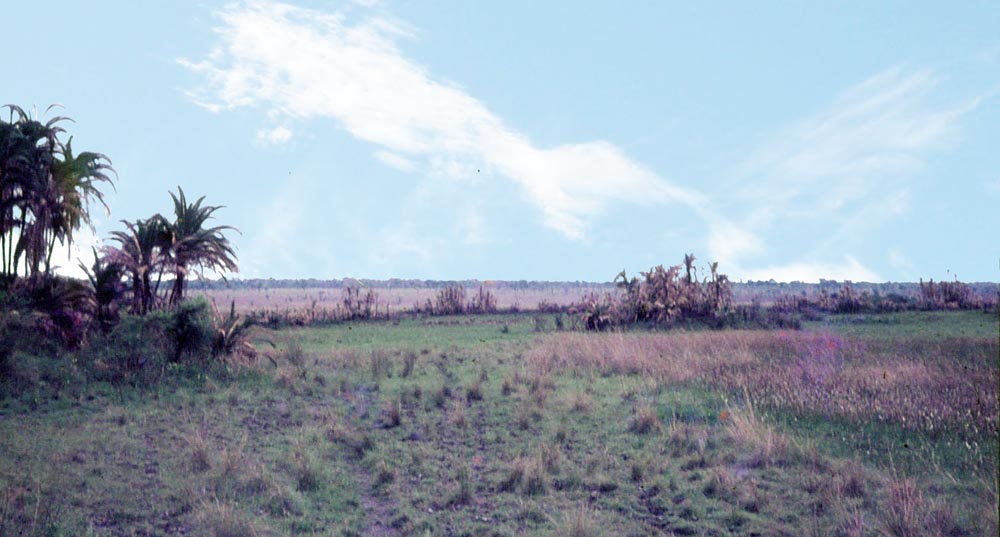

Antonio and his brother Albino packed all their belongings into the Boer wagon and the two-wheeled cart, and headed north.
The Boer wagon, drawn by a team of 16 to 20 oxen, cut slowly through the jungles of the central plateau. Several "spare" ox would travel along side the wagon, as well as a cow with its calf to provide milk. African cattle do not milk unless they have a calf.
One of the boys walked ahead of the oxen to find the best path for the wagon. Antonio or Albino shared the task of conducting the wagon from the seat in front of it. Whoever was not in control of the wagon would walk behind it ready to operate the breaks. The Boer wagons had a brake lever at the rear that was used to slow down the wagon on steep slops and when they needed to stop. The Settlers called it "Brique", a Portuguese version of brake.
They followed almost the same route as today's highway between Lubango and Huambo, until they met the Cunene river close to its source. Even at its source the Cunene river was too wide for Antonio to cross it and he followed the right bank for kilometers on end until they reach Cuima.
There, they found a place were the river runs wide over the rocks and they were able to cross it.
In a good day they would travel twenty to thirty kilometers. They would start very earlier in the morning and would stop around 4.00 PM.When they stopped later in the afternoon, some would gather wood for the fires, others would build a makeshift pen for the oxen with trees and espinheiras, a bush with thorns that resembles cat's fangs.
The pen would keep the cattle together at night and protect them against the attacks of the lions. The smaller boys would take the oxen to a creek to drink and graze until the night approached, where the oxen were kept under close watch in the pens.

The route to Chimbondo

Savanna in the Southeast of Angola